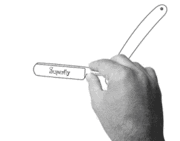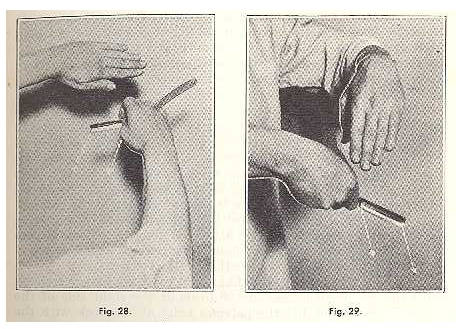Results 41 to 47 of 47
-
10-25-2010, 04:20 PM #41At this point in time...




- Join Date
- Jun 2007
- Location
- North Idaho Redoubt
- Posts
- 27,085
- Blog Entries
- 1
Thanked: 13249
Nothing...
Don't know if it could be proved that this even works it is one of the things with blades that works on FM
it is one of the things with blades that works on FM 
In other words it seems to make the razor cut hair better, is that because of the angled striations extending into the cutting edge??? or because you paid extra attention to getting the edge perfect,???? or perhaps a figment of the imagination?????
Hence the FM factor
-
10-25-2010, 04:26 PM #42At this point in time...




- Join Date
- Jun 2007
- Location
- North Idaho Redoubt
- Posts
- 27,085
- Blog Entries
- 1
Thanked: 13249
I also absolutely disagree here with your premise, more mis-information is construed about this hobby because of this approach than anything else...
The reason SR shaving works is that all these variables come together at a spot and place in the universe at a moment in time, to give you a close comfortable shave... If one tiny variable is not there, then it all starts to break down and all is not right in the universe

This is all in fun of course
-
10-26-2010, 12:20 AM #43Junior Member

- Join Date
- Apr 2010
- Posts
- 23
Thanked: 8
Ok thank you. And I certainly appreciate your point regarding oversimplification.
-
10-27-2010, 11:13 PM #44

I'm kind of late to the party, but I have to agree with the difference between scything and guillatine.
Here we see the scyth stroke

Here we see the guillatine stroke:

For me, I do a little bit of both. As the the OP's point about angles of blade being equivalent, I can agree to a certain extent. I have found that the more edge you use to cut through a hair, the easier it will cut. I believe this also extends the life of the razor (lengthening time between needing to hone) but that is just a hunch.
If you look at the guillotine picture above, you will see that there is both a sideways motion and an angle to the blade. All together, the combine to form an approximate 120 degree angle.
With the scything motion, there is a rotational aspect, so the toe end is actually traveling farther than the heal end. What I like about this is that I feel there is more control over the slicing motion than when I do a straight guillotine pass.
So I combine the two, my razor is started at about 45 degrees from the direction I am cutting, and I add the slicing motion using the scythe stroke.
Now, I know the OP's point was to show that whether you have a high angle + straight stroke, or lower angle + slicing motion, that the effect should be the same. I find this not to be the case. I feel when I shave, that adding even the slightest slicing motion helps shave easier. The analogy of the tomato works here. Moving straight down with a knife at 120 degrees cuts fine, but adding just the slightest slicing motion cuts even better, even if you lessen the angle so that then end resulting cut is less than 120 degrees.
-
10-29-2010, 08:25 PM #45< Banned User >

- Join Date
- Apr 2010
- Posts
- 206
Thanked: 23
Personally, I think you are overthinking the whole thing and should concentrate on a smooth natural stroke. This will produce the best possible action of the blade against the hair, and will also reduce the risk of cuts and nicks. Many of the injuries people suffer while shave are actually due to their attempts to force an unnatural motion such as those you describe. This results in over concentration, muscle tightness and positioning errors that lead to cuts.
-
10-29-2010, 10:47 PM #46

Edge stability is a very important factor from an engineering stand point.
Razor edges are very delicate things and slicing is the way to go to maintain edge keenness. These edges will dull very quickly at these scales with horizontal vectors only (depends on steel grain size carbon content and control of ht parameters).
My guess is the severity of the slicing vector is the "secret" to maintain stability of the edge. Wouldn't like to try a severe scythe myself. I would imagine one would have to keep the blade angle very flat to avoid injury?
-
10-29-2010, 11:56 PM #47

Correction:
By horizontal, I mean blade is kept horizontal and vector is pependicular to it (downward).


 LinkBack URL
LinkBack URL About LinkBacks
About LinkBacks







 Reply With Quote
Reply With Quote